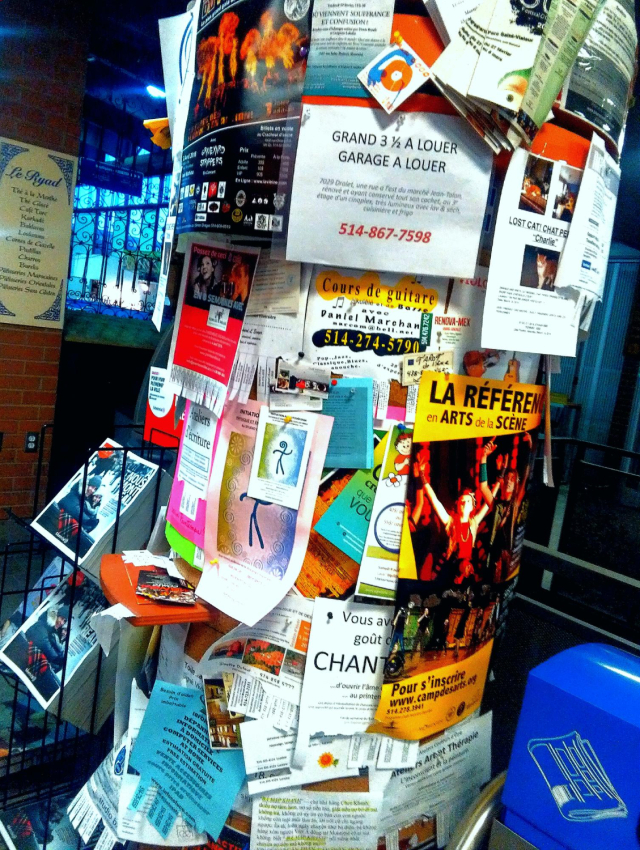Visual pollution is a type of pollution that, although less tangible than air or water pollution, has significant impacts on people's well-being and quality of life. In Peru, especially in large cities such as Lima, Arequipa and Trujillo, visual pollution has become a problem that affects both residents and visitors. This type of pollution ranges from the overload of advertising, unauthorized graffiti and messy electrical cables, to a saturation of visual elements that disrupt the urban and natural landscape.
What is Visual Pollution?
Visual pollution refers to the alteration of the visual environment due to intrusive elements that affect the aesthetics of the landscape, generating distraction and in some cases stress. It includes elements such as:
- Excessive advertising: Posters, billboards and banners that clutter streets and buildings.
- Graffiti: Although considered a form of artistic expression, unauthorized graffiti is a problem when it occurs excessively and uncontrolled.
- Overhead cables and antennas: In Peru, many cities have a tangle of electrical and telecommunications cables that saturate the visual space.
- Incongruous buildings and constructions: The lack of planning and order in the construction of buildings affects the urban landscape, creating a disorderly environment.
Causes of Visual Pollution in Peru.
Visual pollution in Peru has multiple causes, and among the most relevant are:
- Disorderly urban growth: In cities like Lima, rapid urban growth has led to a lack of adequate planning, allowing the proliferation of advertisements, buildings and constructions that alter the landscape.
- Proliferation of advertising: Advertising agencies and businesses have taken advantage of the lack of regulation to place ads in any available space, competing for the public's attention.
- Disorganized infrastructure: Electric cables, poles and antennas are common elements in Peruvian cities, especially in high-density areas.
- Lack of regulation and control: In several urban areas, authorities lack effective policies to control visual clutter, allowing visual pollution to grow unchecked.
Effects of Visual Pollution.
Visual pollution is not just an aesthetic nuisance; its effects go far beyond that and can impact various aspects of citizens' lives:
- Stress and visual fatigue: The saturation of visual stimuli generates an overload in the mind, causing fatigue, stress and distraction.
- Distraction and accident risk: In traffic, a large number of signs and advertisements can divert drivers' attention, increasing the risk of accidents.
- Loss of cultural and natural value: Visual pollution can damage the perception of the country's cultural and natural heritage, also affecting tourism.
- Impact on emotional well-being: Living in a cluttered environment saturated with intrusive elements affects people's quality of life, generating discomfort and discontent.
Visual Pollution in the Main Cities of Peru.
Lime.
The Peruvian capital is the epicentre of visual pollution. Lima's main roads and avenues are full of visual advertising, from banners to large electronic panels. In addition, the infrastructure of cables and antennas adds a mess that breaks with the architectural environment.
Arequipa.
The city of Arequipa, with its colonial architecture, also faces problems of visual pollution. The overload of advertisements in heritage areas affects the tourist experience and diminishes the visual value of the historic center.
Trujillo.
Trujillo also has a problem with visual clutter, with a proliferation of advertisements and little regulation. The lack of planning in the development of new buildings has affected historic and tourist areas of the city.
Initiatives to Control Visual Pollution.
Although visual pollution is a growing problem in Peru, there are some initiatives that seek to control it:
- Regulation of outdoor advertising: In Lima and other cities, some ordinances attempt to regulate outdoor advertising, establishing limits on its location and size.
- Urban redevelopment campaigns: There are programs that seek to reduce the number of cables and poles in urban spaces by organizing the infrastructure.
- Education and citizen awareness: Civil organizations are promoting education so that citizens and businesses respect the urban environment and avoid contributing to visual clutter.
Success Stories in Reducing Visual Pollution.
Some cities around the world have shown that it is possible to reduce visual pollution with effective measures:
- São Paulo, Brazil: In 2007, the "Clean City Law" was implemented, banning the placement of advertisements in public spaces. This initiative drastically reduced visual pollution and transformed the appearance of the city.
- Tokyo, Japan: In Tokyo, advertising regulations are strict and prevent the proliferation of excessive advertisements. In addition, underground cabling in urban areas has improved the aesthetics of the city.
These experiences could serve as a reference for Peru, showing how cities can implement policies that promote a healthier and more organized visual environment.
The Role of Society and Business.
Society has an important role in solving this problem. Citizens and businesses can collaborate by:
- Responsible advertising: Companies can reduce the size and number of advertisements they place in public spaces.
- Support for urban planning regulations: Citizens can demand greater regulation and urban order.
- Participation in clean-up campaigns: Society can collaborate in the organization of clean-up and visual reordering campaigns to improve the environment.
Visual pollution is a problem that affects Peru in different aspects, from the aesthetics of its cities to the well-being of its inhabitants. In a country with a rich cultural heritage and unique natural beauties, it is essential to preserve the visual quality of the environment. Effective regulation, business commitment and citizen participation are essential to address this problem in a comprehensive and sustainable way.
Successful experiences in other cities demonstrate that visual pollution can be controlled with appropriate policies and commitments. In Peru, the adoption of responsible practices and greater awareness of visual impact are crucial steps towards creating a more orderly, attractive and healthy environment for all.
